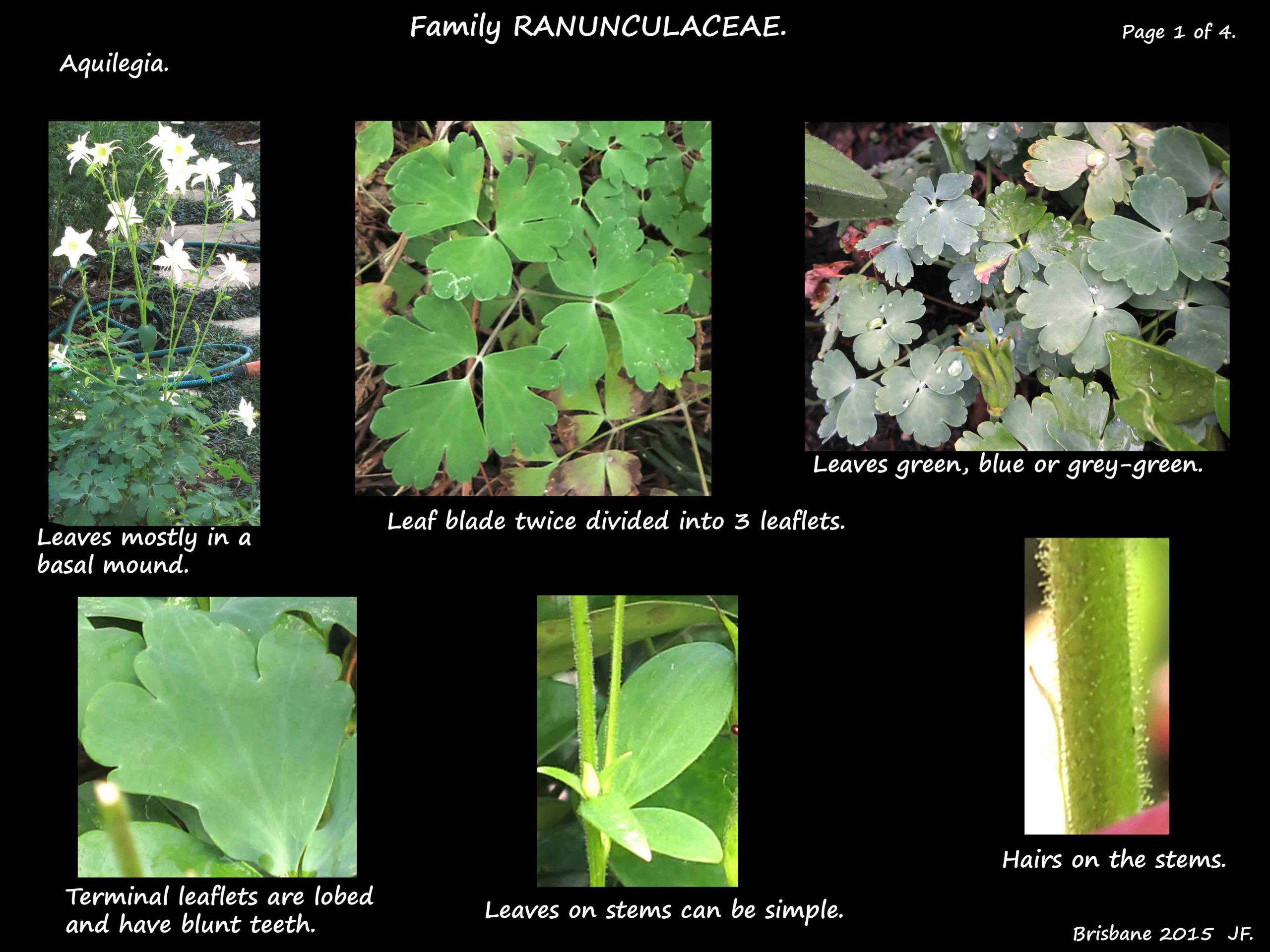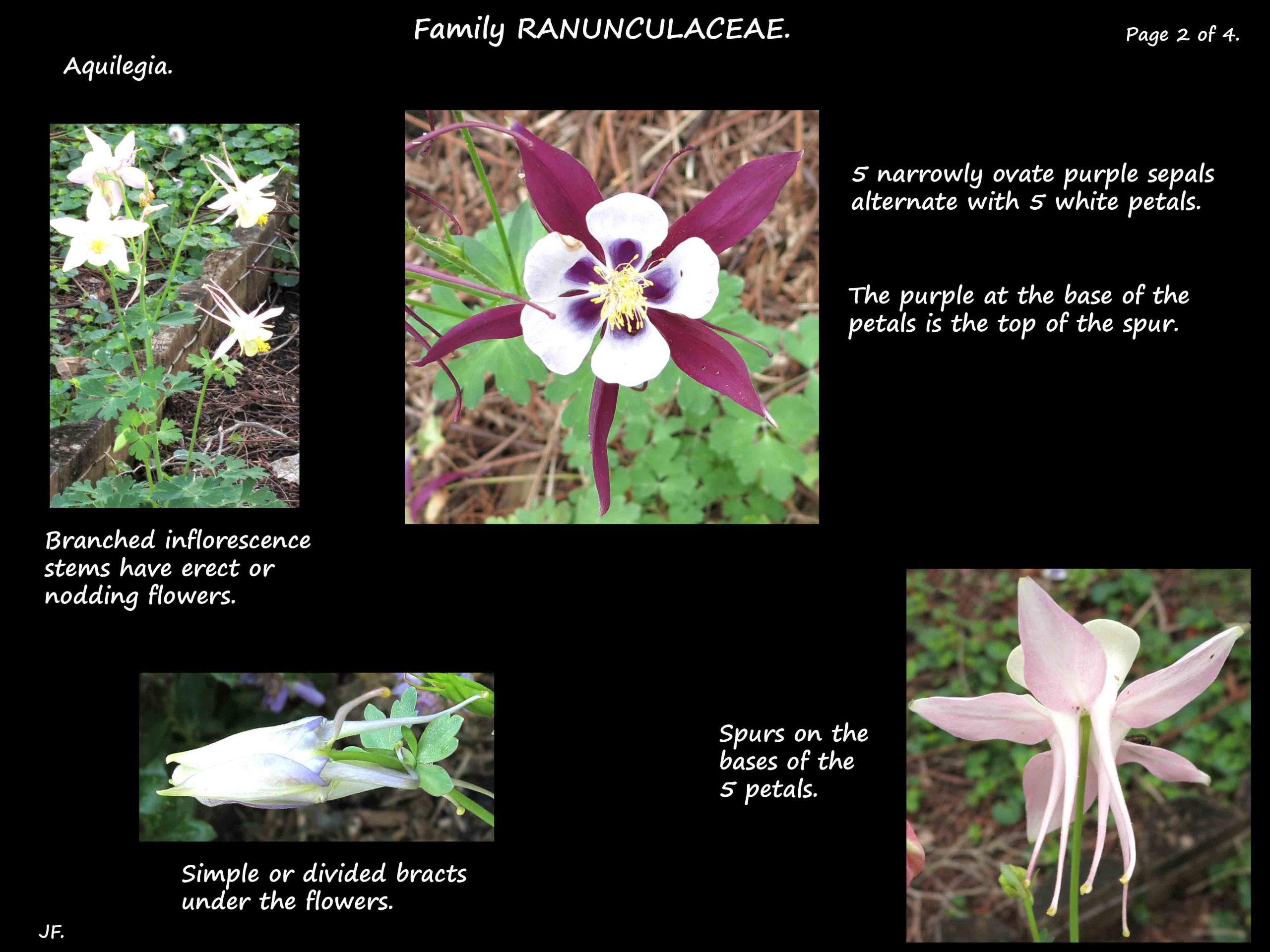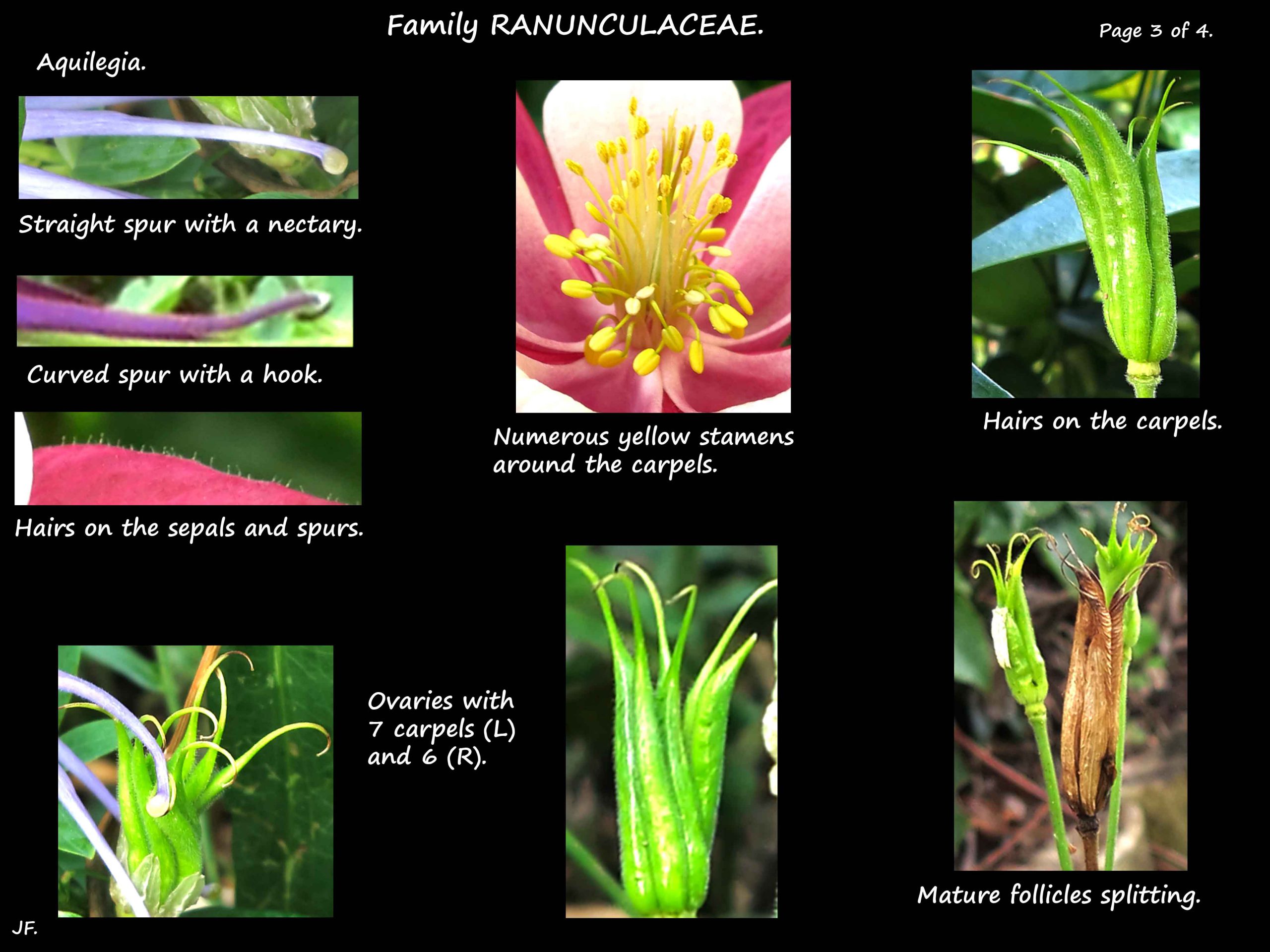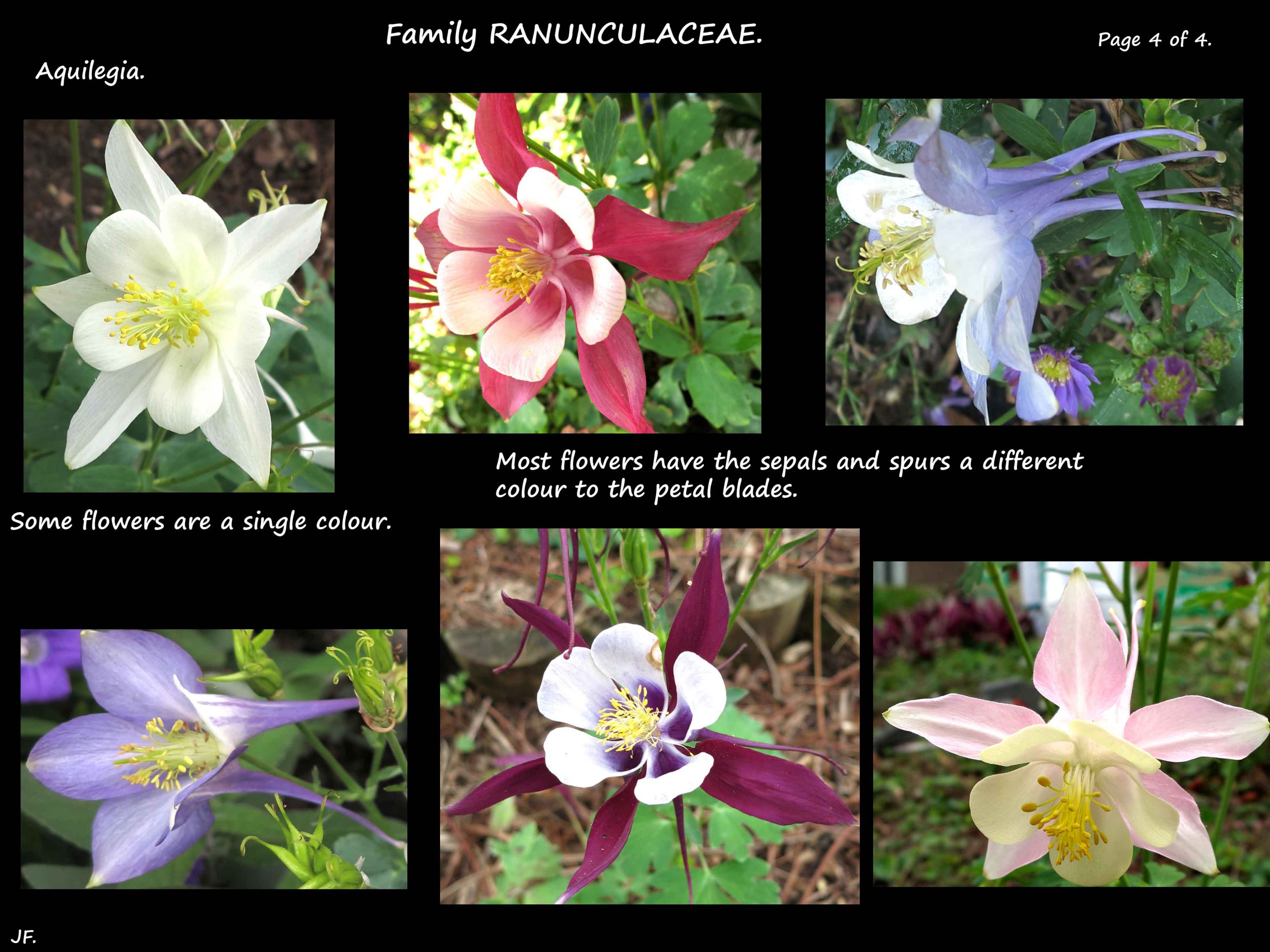Aquilegia – Columbine.
Family Ranunculaceae.
There are 60 to 70 species some commonly known as Columbine or Granny’s Bonnets.
Aquilegia vulgaris is a naturalised weed in some areas of Australia.
Most garden plants seen are cultivars although some are A. flabellata.
The perennial herbs, up to nearly 1 m high, grow from rhizomes.
There is a basal mound of leaves plus some leaves on the stems.
The alternately arranged, often simple leaves on the stems have no petiole.
The basal leaves, on petioles up to 7 cm long, are green, blue-green or grey-green.
The compound leaves are 2 to 3 times ternate.
The blade is divided into 3 leaflets that can each divide into 3 more leaflets.
The terminal rounded leaflets are lobed or dissected and have blunt toothed edges.
Thin, branched inflorescence stems are as long or longer than the leaves.
There may be 1 to 10 bisexual flowers on each.
The erect or nodding flowers are bell or funnel-shaped.
There are simple or slightly divided bracts under them.
The 5 separate, narrow to ovate or oblong sepals, are up to 5 cm long.
They can lie parallel to the floral axis or up to 90 degrees to it.
The 5 separate petals, up to 3 cm long are rounded, spatulate or oblong.
They can be very narrow or up to nearly 2 cm wide.
The petal bases point backwards as a tubular spur.
There is a lot of variation among the spurs depending on the pollinators.
Spurs can be long or short (3 – 180 mm), straight, curved or with a hooked end.
They have a slightly bulbous tip which contains the nectary.
Centrally an enlarged receptacle holds the usually numerous stamens and the carpels .
There are usually tiny staminodes between the stamens and carpels.
The superior ovary has 5 to 10 carpels from 12 to 23 mm long.
Each carpel has numerous ovules.
The style usually forms a beak at the top.
The fruit are aggregates of follicles with a terminal beak.
The black seeds are about 2 mm long.
With native species, hybrids and cultivars they come in a large range of colours.
Some are a single colour but many are bicoloured.
In the bicoloured ones the sepals and spurs are the same with the petal blade a different colour.
Colours include blue, white, cream, yellow, pink, shades of red to orange, shades of purple,
maroon, almost black, purplish-brown and green.
There are dwarf forms, doubles and some without spurs.
Cultivars with hooked spurs come from Aquilegia vulgaris and those with a straight spur from A. chrysantha.
J.F.





